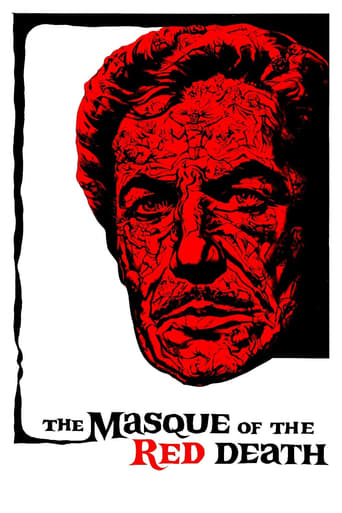
Watching Roger Corman’s, interpretation of Edgar Allen Poe’s short story, “The Masque of the Red Death”, while in the midst of a worldwide pandemic in 2020, gave me a realistic relevance to elements shown in the movie.
The story is set in the Middle Ages of Italy, when the country is ravaged by a plague, called, “The red death”. “The Red Death”, is a fictional disease made up by Poe, but since the story is based on a time period that covered the bubonic plague, a realism to the background is prevalent. This is the seventh film, in a series of eight Poe adaptions directed by Corman. I have seen them all and, “Masque of the Red Death”, is easily the best one.
Corman, was an independent producer/director who was renowned in making quick low budget exploitation films. Whether horror, science fiction, action or youth culture movies, Corman was famous for completing a movie within a shooting period of about two weeks. He was also known for giving anybody with a talent their first chance at making or helping him make a movie. Coppola, Scorsese and others would first learn from Corman as part of his crew and then go on to direct their own B-grade films. In “Masque of the Red Death”, the great filmmaker, Nicolas Roeg, was the Cinematographer. His work here lends a beautiful colorful touch that gives the movie the feel of a much larger budgeted production.
“The Red Death”, is a plague ravaging the Italian countryside in an area ruled by the sadistic and cruel Prince Porspero (Vincent Price, in one of his many sinister roles). Prospero has invited the rich well to do of the area into the safe sanctuary of his castle. He also takes prisoner a beautiful, virginal towns girl for whom he wants to convert to Satanism. Prosper is a Satanist, who worships the devil. At midnight he will hold a Masque, which is a costume ball that includes music, dancing and entertainment. The entertainment concerns murder and suffering, as Corman shows us how the so called privileged take delight in seeing others in pain. He films the castle guest laughing at other people’s misfortunes, through a distorted close-up style that the Great Stanley Kubrick used to wonderful effect in his masterpiece, “A Clockwork Orange”. In fact, there is an actor (Patrick Magee), found in both films, and in both movies he has the same sinister laugh and quirks that are emphasized through these close-ups.
The scenes in the castle ballroom are filled with bright colors with their costumes and grotesque elegance. There are a set of four rooms in the castle, which are each painted in different colors that represent the descent to hell through Satanism, a delicious dungeon that has a wet, dark feel of dampness, the outside plague ridden world with its dark grey fog infested forest and many startling imageries such as a white rose bleeding red blood. Roeg’s mastery of these colors give these scenes an aesthetic beauty that belies its B-movie origins.
Watching this enjoyable movie, I felt that it was a perfect companion to Bergman’s, “The seventh Seal”, which was also set in the dark plague-infested middle ages of Europe, and as with this film, has Death, portrayed as an actual visual being who is an essential part of the story. In Corman’s movie, Death, is dressed in bright screaming red and in his capable hands, with the help of Roeg’s brilliant camera, he has created an exploitation, horror movie that has the look and feel of an art film. It is a brilliant achievement.

